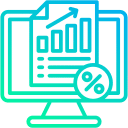Are you curious about how learner data can be used to improve education? Imagine a world where every achievement, skill, and learning experience is easily recognized and integrated into a comprehensive digital profile. This is where digital badging comes into play. In this blog, we will explore the power of digital badging and how it can transform how we collect, analyze, and leverage learner data.

Digital Badges: What Are the Benefits and How can they improve learner data?
Learner data is crucial in shaping educational experiences. It helps educators, institutions, and employers understand progress, identify strengths and weaknesses, and make informed decisions. However, traditional methods of tracking and representing this data often need to be revised. They need help to capture the full picture of an individual’s achievements and skills. That’s where digital badging steps in. It offers a dynamic solution that can revolutionize how we use learner data.
In this blog, we will dive into digital badges in education and discover their benefits. From providing a clear representation of skills and achievements to enabling personalized learning experiences, digital badging can improve the education system. Join us on this enlightening journey as we explore how digital badging can unlock the true potential of learner data.
Understanding Learner Data
Learner data encompasses a wide range of information that sheds light on students’ educational journeys. This includes their achievements, progress, strengths, weaknesses, and learning preferences. However, collecting and utilizing learner data presents challenges. These challenges may include data quality, privacy, and interoperability between systems. Despite these hurdles, accurate and comprehensive learner data is of utmost importance. It enables educators and institutions to gain valuable insights, make informed decisions, and provide personalized learning experiences that cater to the unique needs of each student.
To know more about Digital Badges Challenges and Considerations We are here to help you
What is a Digital Badge?
A digital badge in education is a visual representation of a specific achievement or skill earned by a learner. It is a digital credential that recognizes and validates their accomplishments, knowledge, or competencies in a particular domain or subject.
Digital badges are typically issued by educational institutions, organizations, or platforms that offer online courses, training programs, or learning experiences. These badges are designed to be easily shareable and displayed across various digital platforms, such as social media, e-portfolios, or personal websites. They provide a tangible and portable way for learners to showcase their skills and accomplishments, enhancing their credibility and visibility in academic or professional settings.
Digital badges also enable employers, educators, or peers to quickly assess an individual’s capabilities and track their learning journey, fostering a culture of continuous learning and recognition.
Why Do Digital Badges Matter to Organizations?
Digital badges in education refer to using digital credentials to represent and recognize skills, achievements, and learning experiences. This innovative approach enhances learner data by offering several advantages.
-
Clear representation of skills and achievements:
Digital badges provide a visual and easily shareable representation of specific skills and accomplishments, allowing learners to showcase their competencies to peers, educators, and potential employers.
-
Granular assessment of learning outcomes:
Digital badges enable a detailed assessment of learning outcomes by providing specific information about learners’ knowledge areas and competencies, offering a more comprehensive understanding of their skills.
-
Ability to track progress and growth:
Digital badges allow for tracking learners’ progress and growth over time. Educators and learners can monitor advancements, identify areas for improvement, and set goals based on the accumulation of badges.
-
Recognition of informal and non-traditional learning:
Digital badging recognizes and validates informal and non-traditional learning experiences that may not be captured through traditional educational pathways. It acknowledges and credits learners for acquiring knowledge and skills outside formal settings.
Improving Data Collection and Analysis
Improving data collection and analysis is crucial for harnessing the full potential of learner data. Integrating digital badges with learning management systems enables seamless data collection, tracking, and analysis, creating a comprehensive record of learners’ achievements and progress. Standardization and interoperability of digital badges ensure that they can be recognized and shared across different platforms and institutions, enhancing the portability and value of learner data.
Leveraging metadata, such as timestamps, descriptions, and issuer information, enhances the richness and context of learner data, providing deeper insights into achievements and competencies. However, ethical considerations are paramount in collecting and using learner data, including ensuring privacy and informed consent and addressing biases and inequalities to ensure fair and responsible data utilization.
Leveraging Learner Data for Personalized Learning
Learner data provides a valuable resource for implementing personalized learning approaches. By using learner data to inform instructional design, educators can tailor their teaching methods and content to meet individual learners’ specific needs and preferences. Analyzing learner data allows for identifying individual strengths and weaknesses, enabling the customization of learning experiences to optimize engagement and learning outcomes.
Moreover, data analysis helps to identify learning gaps and areas where additional support or interventions may be necessary, ensuring that learners receive the targeted assistance they need to succeed. Ultimately, leveraging learner data for personalized learning creates a more tailored and effective educational experience that maximizes each learner’s potential.
Challenges and Considerations
While leveraging learner data offers numerous benefits, addressing the challenges and considerations associated with its collection and use is essential. Privacy and security concerns must be carefully addressed to safeguard sensitive learner information and ensure compliance with data protection regulations.
Data accuracy and reliability are crucial, as inaccuracies or inconsistencies can impact decision-making and hinder the effectiveness of personalized learning approaches. Addressing biases and inequalities in learner data is important, as data collection and analysis processes can perpetuate or exacerbate existing disparities. Promoting transparency and informed consent is vital to establish trust and ethical practices, ensuring learners know how their data is collected, used, and shared.
Conclusion:
Digital badging offers significant benefits for learner data by clearly representing skills, enabling granular assessment, tracking progress, and recognizing non-traditional learning. However, it is crucial to emphasize the importance of ethical and responsible use of learner data, ensuring privacy, accuracy, and addressing biases and inequalities. Looking ahead, the potential of digital badging in improving education is immense, fostering personalized learning, empowering learners, and revolutionizing how we collect, analyze, and leverage learner data.











